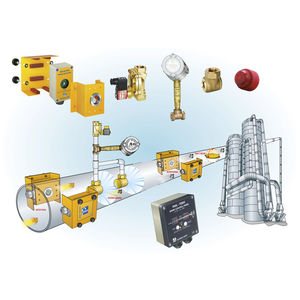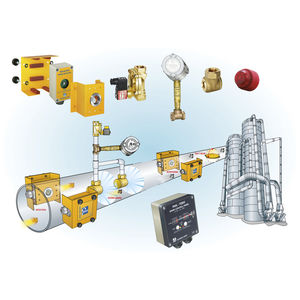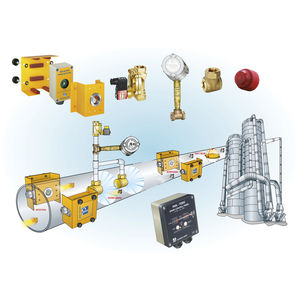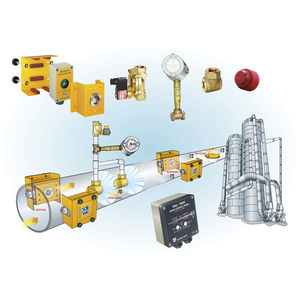
Spark detector RIV-601P/Sinfraredelectronicmechanical
Add to favorites
Compare this product
Characteristics
- Detected entity
- spark
- Technology
- infrared, electronic, mechanical
- Application
- industrial
- Other characteristics
- IP66, continuous, ATEX
Description
Spark detector RIV-601P/S is an electronic fire alarm device, sensitive to sparks and incandescent bodies in movement.
Its use is particularly recommended on dust collection systems in factories where wood is processed, chipboard or furniture are manufactured, in sawmills and the like, where fires are both probable and frequent.
It is also recommended for the textile industry, especially in cotton mills, in cereal and animal feed mills and storage and in the treatment of hides and leather. And many many others where sparks are produced and they can start a fire.
Spark detector RIV-601P/S contains an element sensitive to the infrared (IR) radiation emitted by incandescent bodies, a series of amplifier and time circuits, and an output relay that provides a 1A 30Vdc changeover contact.
When a spark is detected the relay is operated for 3 seconds (time can be adjusted from 1 to 10 seconds). If the sparks are continuous the relay is operated till 3 seconds after last spark.
The spark detector is designed for installation over the ducts of the dust extraction systems or pneumatic chip conveyors, so that it can see inside the duct through a window. It can also be installed over screw and belt conveyors or other mechanical systems for conveying chips, sawdust, cereals or animal feed, but sun light or artificial light must not fall directly on the detection window as they might cause false alarms.
The detector is normally installed using the SAM-871 mounting frame, in which it is supported by rubber cushions and is protected from the environment and vibrations.
VIDEO
Catalogs
*Prices are pre-tax. They exclude delivery charges and customs duties and do not include additional charges for installation or activation options. Prices are indicative only and may vary by country, with changes to the cost of raw materials and exchange rates.








